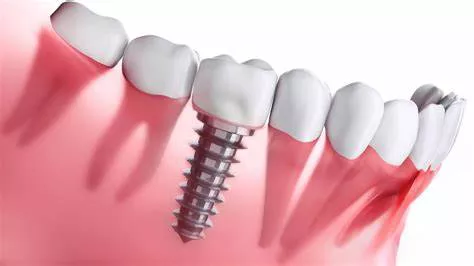Dental implants have revolutionized restorative dentistry, offering a durable and aesthetically pleasing solution for missing teeth. However, the process of getting dental implants is not instantaneous. It involves several stages, each critical to ensuring the success and longevity of the implants. This article aims to provide a detailed timeline of the dental implant process from start to finish, helping patients understand what to expect and how long each step takes.
Initial Consultation And Evaluation
The first step in the dental implant process is the initial consultation and evaluation. This stage involves a comprehensive dental examination, which includes:
Medical and Dental History Review: The dentist will review the patient’s medical and dental history to identify any conditions that might affect the procedure.
Imaging and Diagnostic Tests: X-rays, CT scans, and possibly 3D imaging are used to assess the health of the jawbone and determine the precise placement of the implants.
Treatment Planning: Based on the evaluation, a customized treatment plan is created. This plan outlines the number of implants needed, the type of implants, and the timeline for the procedure.
SEE ALSO: What Is The Process of Same-day Full-Mouth Dental Implants?
Time Frame
The initial consultation and evaluation typically take one to two weeks. This includes scheduling the appointment, conducting the examination, and developing the treatment plan.
Pre-Surgical Procedures
Depending on the condition of the patient’s oral health, pre-surgical procedures may be necessary. These can include:
Tooth Extraction: If a damaged or decayed tooth needs to be removed before placing the implant, this procedure is performed. Healing time after extraction is generally required before the next steps.
Bone Grafting: If the jawbone is not thick or dense enough to support an implant, a bone graft may be necessary. This involves adding bone or bone-like materials to the jaw. Healing from a bone graft can take several months.
Time Frame
Pre-surgical procedures can add several weeks to several months to the overall timeline:
Tooth extraction requires about two to six weeks of healing.
Bone grafting can take three to six months for adequate healing and integration.
Implant Placement Surgery
The next stage is the surgical placement of the dental implants. This procedure involves:
Anesthesia: Local anesthesia or sedation is administered to ensure patient comfort.
Implant Placement: The dentist makes an incision in the gum to expose the jawbone and drills a hole to place the implant post. The post is then secured in the jawbone.
Stitching: The incision is closed with stitches, and the healing process begins.
Time Frame
The implant placement surgery itself typically takes one to two hours per implant. Post-surgery recovery, however, is crucial for the success of the implants.
Osseointegration
Osseointegration is the process by which the jawbone grows around the implant post, securing it firmly in place. This stage is critical for the stability and longevity of the dental implants.
Time Frame
Osseointegration generally takes three to six months. During this period, patients must follow the dentist’s instructions carefully to ensure proper healing and integration.
Abutment Placement
Once osseointegration is complete, the next step is placing the abutment. The abutment is a connector that attaches the implant post to the final dental crown. This involves:
Minor Surgery: The dentist reopens the gum to expose the implant post and attaches the abutment.
Gum Healing: The gum tissue is allowed to heal around the abutment, creating a cuff that will support the final crown.
Time Frame
Placing the abutment usually takes about one to two weeks for the gum tissue to heal properly around it.
Impressions for the Crown
After the gums have healed around the abutment, impressions of the patient’s mouth are taken to create the custom dental crown. This stage includes:
Impression Taking: A mold or digital scan of the mouth is made to ensure the crown fits perfectly.
Crown Fabrication: The impressions are sent to a dental laboratory where the crown is crafted.
Time Frame
Creating and fitting the custom crown typically takes two to three weeks. During this time, the patient may have a temporary crown placed.
Crown Placement
The final step in the dental implant process is placing the permanent crown. This involves:
Fitting and Adjustment: The dentist ensures the crown fits correctly and makes any necessary adjustments.
Permanent Placement: The crown is permanently attached to the abutment, completing the implant process.
Time Frame
The crown placement appointment generally takes one to two hours.
Overall Time Frame
From start to finish, the dental implant process can take anywhere from six months to over a year, depending on the individual circumstances and any additional procedures required. Here is a summary of the time line:
Initial Consultation and Evaluation: 1-2 weeks
Pre-Surgical Procedures: Several weeks to several months (2-6 weeks for tooth extraction, 3-6 months for bone grafting)
Implant Placement Surgery: 1-2 hours per implant
Osseointegration: 3-6 months
Abutment Placement: 1-2 weeks
Impressions for the Crown: 2-3 weeks
Crown Placement: 1-2 hours
Factors Affecting The Timeline
Several factors can influence the overall duration of the dental implant process:
Bone Health: Patients with sufficient bone density typically have a shorter timeline. Those requiring bone grafts will experience a longer process.
Oral Health: Conditions such as gum disease must be treated before implant placement, which can extend the timeline.
Number of Implants: Multiple implants may require additional time for placement and healing.
Patient Compliance: Following post-operative care instructions is crucial for timely healing and success.
Conclusion
Dental implants are a multi-step process that requires time and patience but ultimately provides a permanent and natural-looking solution for missing teeth. Understanding the timeline from start to finish helps patients set realistic expectations and appreciate the meticulous nature of this advanced dental procedure. By adhering to the dentist’s instructions and attending all scheduled appointments, patients can achieve successful outcomes and enjoy the benefits of dental implants for many years to come.

